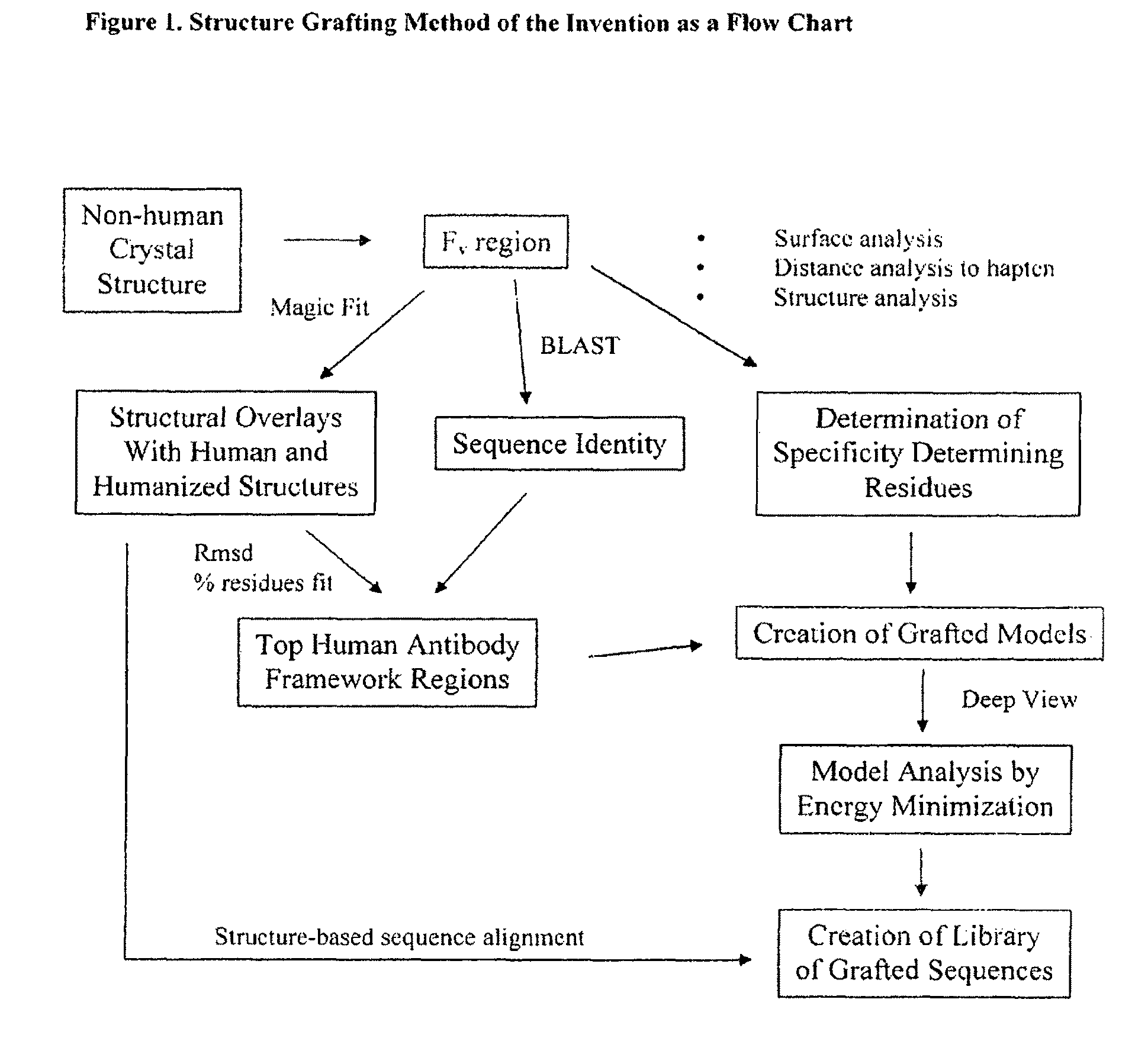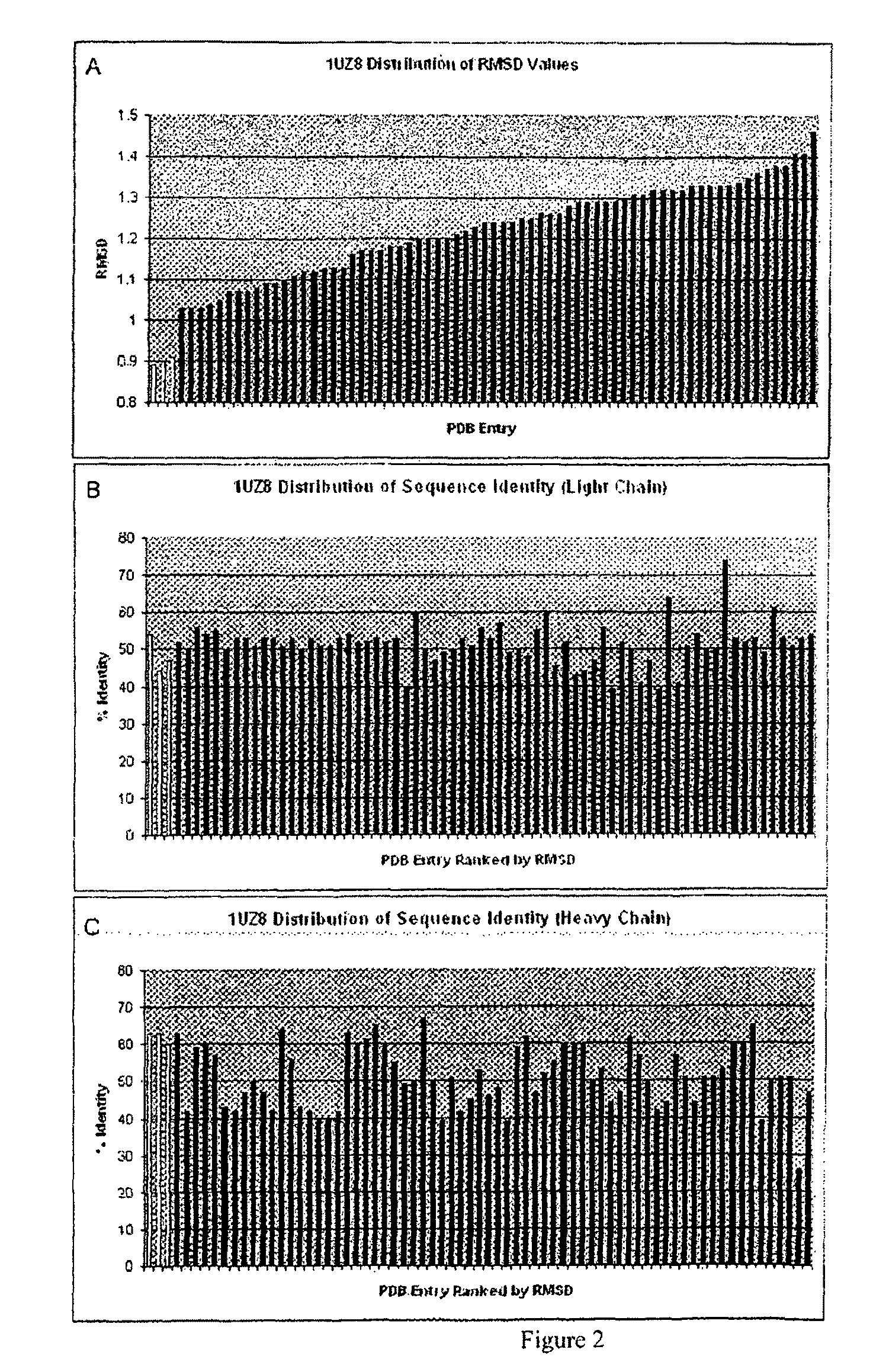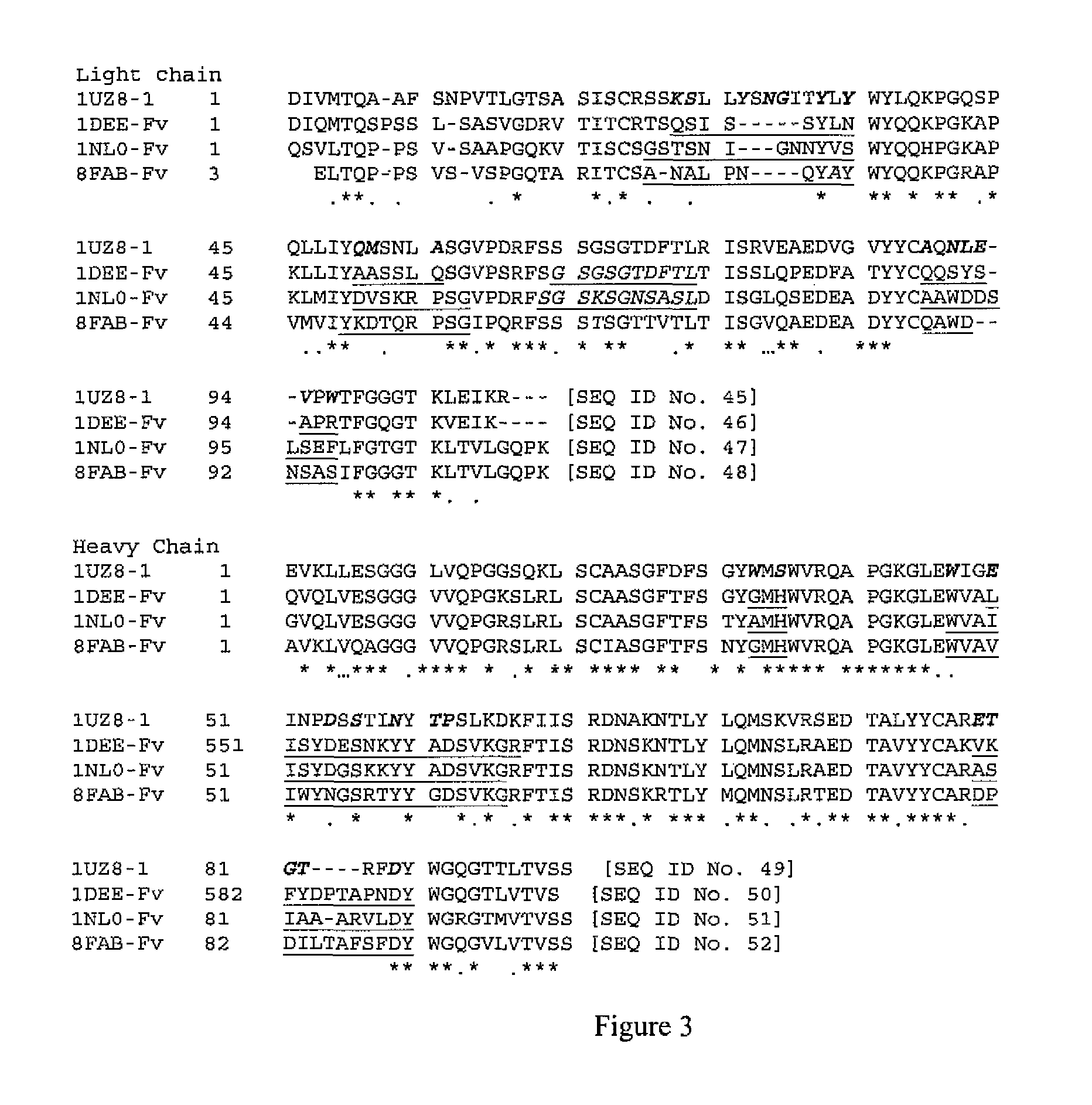Methods for humanizing antibodies and humanized antibodies made thereby
a technology of humanizing antibodies and humanizing antibodies, applied in the field of methods, can solve the problems of limited methods, requiring continued refinement, and utilizing the incomplete human repertoire and antibody maturation capacity, and achieve the effect of reducing the immunogenicity potential of antibodies
- Summary
- Abstract
- Description
- Claims
- Application Information
AI Technical Summary
Benefits of technology
Problems solved by technology
Method used
Image
Examples
example 1
Formation of a Humanized Antibody by Derivation of a murine Monoclonal Antibody, Anti-Lewis X Antibody
[0167]The Structure Grafting method (FIG. 1) of the invention was used to modify the murine anti-Lewis X antibody. This example is included to demonstrate the utility of structural information in the modification of antibodies while conserving structural elements essential for antigen binding. In particular, there is a specific residue in the framework of the parent antibody that appears to be critical for positioning of the CDRs in the structure. These interactions are maintained in the modified antibody formed by the method. The parent antibody has a solved crystal structure at a resolution of 1.8 Å was obtained from the Protein Data Bank (code 1UZ8). This structure contains two antibody molecules in the asymmetric unit. The rmsd for the two molecules is 0.59 Å calculated using 430 alpha carbon atoms. Since the two chains are ver similar in the structure, the first chain was used ...
example 2
Formation of a Humanized Version of a Murine Monoclonal Antibody to uPAR Using the Structure Grafting Method (FIG. 1)
[0177]The present methods were used to generate humanized versions of a murine monoclonal antibody that binds to uPAR and inhibits the downstream signaling of the receptor. Urokinase-type plasminogen activator (uPA) binds to uPAR after activation by proteolytic cleavage. The activated uPAR then associates with a number of effector molecules, including several integrins and vitronectin (Wei et al., 1996; Science 273: 1551-5; Xue et al., 1997; Cancer Res. 57: 1682-9; Carriero et at, 1999; Cancer Res. 59: 5307, the entire teachings of which are incorporated herein by reference). These downstream effectors then lead to cell proliferation, migration, and invasion. Since proliferation, migration, and invasion are integral processes for the progression and metastasis of cancers, inhibition of the association of uPA and uPAR or inhibition of the activity of uPAR has been prop...
example 3
Formation of a Humanized Version of a Murine Monoclonal Antibody to uPAR Using the EPU Method
[0186]The EPU method outlined above (FIGS. 10 and 11) was used to modify the murine monoclonal antibody ATN-615 to create antibodies with potential therapeutic value against cancer. The solved crystal structure of antibody ATN-615 in complex with soluble uPAR and a N-terminal fragment of uPA at a resolution of 1.9 Å was obtained from the Protein Databank (code 2FD6).
[0187]Before creation of the model, the specificity determining residues of the parent antibody were determined. First, all residues within 5 Å of the soluble uPAR molecule in the complex structure were identified. These residues included Ser3 1, Tyr32, Trp91, Asn92, Tyr93, and Phe96 from the light chain and Tyr33, Trp50, Phe52, Asp55, Asn56, Thr57, Glu58, Trp95, and Trp99 from the heavy chain. The antibody binding site on uPAR comprised two amino acid segments of uPAR, residues 185-193 which interact primarily with the light cha...
PUM
| Property | Measurement | Unit |
|---|---|---|
| pharmaceutical composition | aaaaa | aaaaa |
| compositions | aaaaa | aaaaa |
| binding affinity | aaaaa | aaaaa |
Abstract
Description
Claims
Application Information
 Login to View More
Login to View More - R&D
- Intellectual Property
- Life Sciences
- Materials
- Tech Scout
- Unparalleled Data Quality
- Higher Quality Content
- 60% Fewer Hallucinations
Browse by: Latest US Patents, China's latest patents, Technical Efficacy Thesaurus, Application Domain, Technology Topic, Popular Technical Reports.
© 2025 PatSnap. All rights reserved.Legal|Privacy policy|Modern Slavery Act Transparency Statement|Sitemap|About US| Contact US: help@patsnap.com



